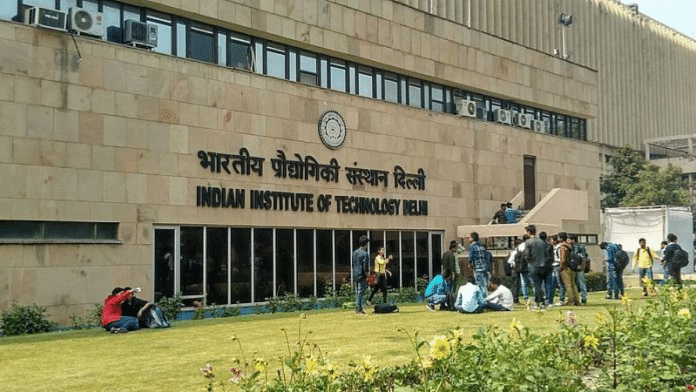New Delhi: The Indian Institute of Technology Delhi (IIT-D) retained its position as the highest-ranked educational institute in India for the fifth consecutive year in the QS World University Rankings: Asia 2026. The report, released Tuesday, highlights India’s growing academic footprint in Asia, particularly in the areas of faculty qualifications and research output, even as internationalisation remains a persistent challenge.
According to the rankings, IIT Delhi is placed 59th in Asia, followed by IISc Bengaluru (64th), IIT Madras (70th), IIT Bombay (71st), IIT Kanpur (77th), IIT Kharagpur (77th) (BOTH at 77th), and Delhi University (95th). These seven institutions have secured spots in the region’s top 100.
However, several of them have witnessed a decline in rankings compared to last year — IIT Delhi fell from 44th to 59th, IISc from 62nd to 64th, IIT Madras from 56th to 70th, IIT Kanpur and IIT Kharagpur from 67th and 60th respectively to 77th, and Delhi University from 81st to 95th.
Despite these declines, India has shown significant progress in overall representation and research strength. Nineteen Indian universities achieved their highest-ever rankings, including Chandigarh University (109th), BITS Pilani (154th), Shoolini University, and O.P. Jindal Global University (163rd). In total, India now has seven universities in Asia’s top 100, 20 in the top 200, and 66 in the top 500 — reflecting the country’s expanding presence in Asian higher education.
Of last year’s Indian entrants, 36 institutions improved their performance, 16 maintained their positions, and 105 saw declines, a fluctuation QS attributed partly to the inclusion of more universities this year. The 2026 edition ranks 1,529 universities from 25 education systems, with 558 debut entries. China (Mainland) remains the most represented country with 395 universities, followed by India with 294, consolidating its position as Asia’s second most represented higher education system.
Jessica Turner, CEO of QS Quacquarelli Symonds, said India’s growing representation signals systemic growth since the launch of the National Education Policy (NEP) 2020. “In just five years since the NEP’s introduction, India has built globally relevant and locally empowering capacity. The inclusion of over 130 Indian universities in this year’s rankings signals both depth and breadth. As research ecosystems mature and international partnerships expand, India is positioning itself as a global knowledge leader,” she said.
The University of Hong Kong topped the 2026 Asia rankings, followed by Peking University, while Nanyang Technological University (NTU) and the National University of Singapore (NUS) shared third place.
The rankings evaluated universities based on 11 indicators — Academic Reputation, Employer Reputation, Faculty-Student Ratio, Citations per Paper, Papers per Faculty, Staff with PhD, International Research Network, International Faculty, International Students, Inbound Exchange Students, and Outbound Exchange Students.
In India, IIT Bombay ranked 26th in Academic Reputation and 11th in Employer Reputation — the highest among Indian institutes on those parameters. Shoolini University of Biotechnology and Management Sciences topped in Citations per Paper, while Maulana Abul Kalam Azad University of Technology (MAKAUT), West Bengal, ranked first in Asia for Papers per Faculty.
India’s strength, the report stated, lies in faculty qualifications and research productivity. It noted that India leads Asia in the proportion of faculty with PhDs and in papers published per faculty. Five Indian universities rank among Asia’s top 10 for research productivity, 28 in the top 50, and 45 in the top 100 for Staff with PhD. NIT Nagaland and Mother Teresa Women’s University jointly hold second place in Asia for faculty qualifications, while nine others — including IISc Bengaluru, IIT Madras, IIT Kanpur, IIT Kharagpur, IIT Bhubaneswar, IIT Patna, IIT Ropar, IISER Bhopal, and IIITDM Kancheepuram — share the fourth position.
“These results highlight India’s strong commitment to faculty development and research-led teaching,” the report stated.
However, the report also flagged internationalisation as India’s weakest area. India continues to score below global averages in indicators such as International Faculty (18.9 vs ~31 globally), International Students, and Student Exchange programs.
“India continues to face challenges in cross-border engagement and diversity, with low levels of international faculty presence, student mobility, and exchange participation,” the report noted.
Despite these challenges, QS said India’s growing representation and leadership in research indicators mark an important step towards its ambition of becoming a global education and innovation hub.
(Edited by Sampurna Panigrahi)
Also read: Three more foreign universities from UK, Australia set to open campuses in India






